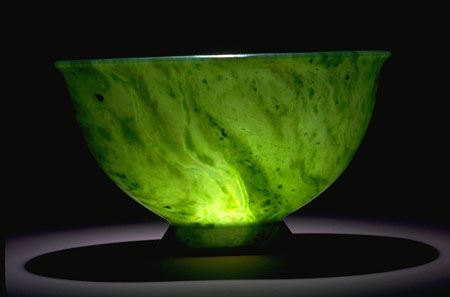jade

Jade is either of two tough, hard minerals with a compact interlocking grain structure, commonly green but also found as white, mauve, red-brown, or yellow. It is used as a gemstone to make carved jewelry and ornaments. Jade carving in China dates from the first 1st millennium BC, but the finest examples are late 18th century.
Nephrite, the commoner form of jade, is an amphibole, a combination of tremolite and actinolite, occurring in China, Russia, New Zealand, and the western United States. Jadeite, rarer than nephrite and prized for its more intense color and translucence, is a sodium aluminum pyroxene, found chiefly in upper Burma. Hardness: 5–6; relative density: 3–3.4.


